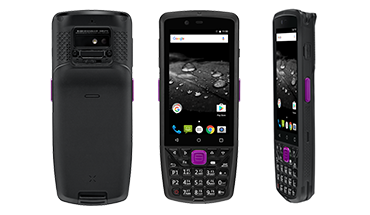What is an Android POS Machine?
Let’s break it down for all of your small business owners out there who are still rocking that old-school cash register. An Android POS (point of sale) machine is basically a tablet or smartphone that runs on the Android operating system, but it’s decked out with all the bells and whistles you need to run your business like a pro.
Think of it as a cash register on steroids; it can handle payments, track inventory, manage employees, and even analyze sales data, all from one sleek little device. And the best part? It’s powered by the same Android system that runs your phone, so it’s super user-friendly and easy to navigate.
Why Should You Switch to an Android POS?
Mobility and Flexibility
One of the biggest perks of an Android POS is that it’s portable. Unlike those clunky old cash registers that are practically glued to the counter, these bad boys are lightweight and can go wherever your business takes you. Running a pop-up shop or food truck? No problem! Just grab your Android POS, and you’re good to go.
Affordable and Scalable
Traditional POS systems can cost an arm and a leg, not to mention the added expense of hiring a tech team to set them up and maintain them. But with an Android POS, you’re looking at a more budget-friendly option that can grow with your business. Plus, since it runs on a familiar operating system, you won’t have to shell out for costly training sessions.
Endless Customization
One of the coolest things about Android POS machines is the sheer number of apps and integrations available. Think of it as the app store for your business; you can customize your POS with all sorts of nifty features, from loyalty programs to inventory management tools and even employee scheduling apps. It’s like having a virtual assistant to help you run your business smoothly.
Top Android POS Systems to Consider
Now that you’re sold on the awesomeness of Android POS machines, let’s take a look at some of the top contenders on the market:
Handheld Mobile Terminal with Physical Keyboard (A02)

- Size: 4-inch IPS TFT 1153*640
- OS: Android 11
- Storage: 2GB+16GB
- Wifi : Wi-Fi 802.11a/b/g/n/ac( dual frequency: 2.4GHz+5GHz)
- 4G: 4G(TDD-LTE/FDD-LTE/WCDMA/TD-SCDMA/GSM)
- I/O Port: USB*1; port*1; OTG/SIM card/micro SD
- Battery: 5000mAh, removable and replaceable polymer batteries
- Barcode scan & NFC: Supported
Altarctic’s A02 handheld mobile terminal features physical keys, offering a range of functions and shortcuts for quicker and more convenient operations. The keyboard design helps reduce pressure on fingers and wrists from prolonged touchscreen use, enhancing user comfort.
Industrial Portable Device A06

- Size: 6.2 inch HD 720*1520
- OS: Android 12
- Storage: 4GB+64GB
- Wifi: Wi-Fi 802.11a/b/g/n/ac( dual frequency: 2.4GHz+5GHz)
- 4G: 4G(TDD-LTE/FDD-LTE/WCDMA/GSM)
- I/O port: USB*1; port*1; OTG/SIM card/ Micro SD
- Battery: 5300mAh, removable and replaceable polymer batteries
- Barcode Scan&NFC: Supported
This product differs in size from the A03 model, featuring a 6.2-inch screen for a larger display. It is industrial-grade with an IP68 rating, capable of withstanding drops from 1.5 meters. The product integrates NFC, barcode scanning, Bluetooth, GPS, front and rear cameras, and a large-capacity removable battery. This allows for convenient accessory replacement and long-term effective use, resulting in greater value for users.
Square
Square is kind of like the OG of Android POS systems. Their sleek and user-friendly interface has made them a favorite among small businesses, and they offer a ton of features like inventory management, employee time tracking, and even email marketing tools. Plus, their hardware is pretty snazzy, with options like portable card readers and countertop terminals.
Clover
Clover is another heavy hitter in the Android POS game, and they’re known for their robust hardware options. From handheld devices to full-blown countertop terminals, they’ve got a solution for businesses of all sizes. Their software is also top-notch, with features like advanced reporting, employee management, and even a built-in web browser for on-the-go internet access.
Toast
If you’re in the food service industry, Toast should definitely be on your radar. This Android POS system was designed specifically for restaurants, with features like tableside ordering, kitchen display systems, and even online ordering integrations. Plus, their hardware is built to withstand the chaos of a busy kitchen, with spill-proof and heat-resistant cases.
Setting Up Your Android POS
So you’ve picked your Android POS system—now what? Setting up your new system might seem daunting, but it’s super straightforward:
- Get the hardware. Depending on your chosen system, you’ll need to invest in some hardware like a tablet, card reader, or receipt printer. Most POS providers offer hardware bundles to make it easy.
- Download the software. Once you’ve got your hardware squared away, it’s time to download the POS app and any additional integrations you want to use.
- Connect your peripherals. This is where you’ll hook up your card reader, cash reader, and any other accessories to your tablet or smartphone.
- Set up your products and services. Now comes the fun part – adding all your products, services, and pricing to your new POS system. Most systems make this process pretty painless with bulk import options.
- Train your staff. Since your Android POS runs on a familiar operating system, training your employees should be a breeze. But it’s still a good idea to walk them through the basic functions and any custom settings you’ve set up.
And just like that, you’re ready to start ringing up sales like a pro! Of course, if you hit any snags along the way, most POS providers offer stellar customer support to help you out.
Unleash the Power of Data With Your Android POS
One of the biggest advantages of using an Android POS is the wealth of data and insights it can provide about your business. These systems can track everything from your best-selling items to your busiest times of day, giving you the intel you need to make smarter decisions.
But we know what you’re thinking—ain’t nobody got time for crunching numbers and analyzing spreadsheets? That’s where the reporting and analytics features of your Android POS come in. Most systems offer user-friendly dashboards and customizable reports that break down your sales data into easy-to-digest chunks.
With just a few taps, you can see which products are flying off the shelves and which ones are gathering dust (hello, clearance sale!). You can even drill down into employee performance metrics to see who’s killing it on the sales floor and who might need a little extra coaching.
And the best part? All this data is accessible from anywhere, thanks to the cloud-based nature of most Android POS systems. So whether you’re at the store, at home, or on the go, you can stay on top of your business’s performance with just a few swipes.

- Size: 4-inch WVGA, 800*480 IPS
- OS: Android 9.0
- Storage: 2+16GB
- Wifi: Wi-Fi 802.11a/b/g/n/ac/k/v/r( dual frequency: 2.4GHz+5GHz)
- 4G: 4G(TDD-LTE/FDD-LTE/WCDMA/TD-SCDMA/GSM)
- I/O port: USB*1;charging port*1;OTG/SIM card/ Micro SD
- Battery: 5000mAh, removable and replaceable polymer batteries
- Barcode scan &NFC: Supported
The Altarctic Smart terminal model A01 is built to withstand tough conditions meets IP67 standards for water and dust resistance, and withstands drops of up to 2 meters onto marble floors and concrete floors. Its compact 4-inch size makes it ideal for handheld use in various scenarios such as food and beverage retail, superstores, express logistics, warehouse inventory, mobile sales, product tracing, hospital care, and wholesale and production management.
Integrating Your Android POS with Other Business Tools
While your Android POS system is a powerhouse on its own, it’s even more impressive when integrated with other business tools and apps. Most POS providers offer a slew of integrations that can help streamline your operations and give you a complete view of your business.
Accounting Software
Say goodbye to the nightmare of juggling receipts and manually entering sales data. Many Android POS systems integrate seamlessly with popular accounting software like QuickBooks or Xero, automatically syncing your sales data for hassle-free bookkeeping.
E-commerce Platforms
If you’ve got an online store in addition to your brick-and-mortar location, integrating your POS with your e-commerce platform can be a game-changer. Not only will it keep your inventory levels synchronized across all your sales channels, but you’ll also be able to manage online orders and returns from your POS systems.
Customer Relationship Management (CRM) Tools
Building strong relationships with your customers is key to any successful business, and a CRM integration can help you do just that. By syncing your POS data with a CRM tool like Salesforce or HubSpot, you can track customer purchase history and preferences and even send targeted marketing campaigns based on their buying behavior.
The possibilities are endless when it comes to integrating your Android POS with other business tools. So don’t be afraid to explore different options and build a customized tech stack that works for your unique needs.
The Future of Android POS Systems
As technology continues to evolve, so too will the capabilities of Android POS systems. Here are a few trends and innovations we might see in the not-so-distant future:
Advanced Payment Options
We’re already seeing Android POS systems embrace alternative payment methods like mobile wallets and cryptocurrency. But as these payment technologies become more mainstream, we can expect even tighter integrations and smoother checkout experiences.
Artificial Intelligence and Machine Learning
AI and machine learning have the potential to revolutionize the POS experience. Imagine a system that can automatically adjust pricing based on demand or suggest personalized product recommendations to customers based on their purchase history. The future is looking pretty smart, folks.
Internet of Things (IoT) Integration
As more devices become connected to the internet, we might see Android POS systems integrating with IoT technologies like smart shelves or inventory trackers. This could lead to more accurate inventory management, reduced shrinkage, and a more streamlined shopping experience for customers.
No matter what the future holds, one thing is certain: Android POS systems are here to stay, and they’re only going to get more powerful and versatile as time goes on. So if you haven’t already jumped on the Android POS bandwagon, what are you waiting for? The future of small business is calling, and it’s time to answer.

